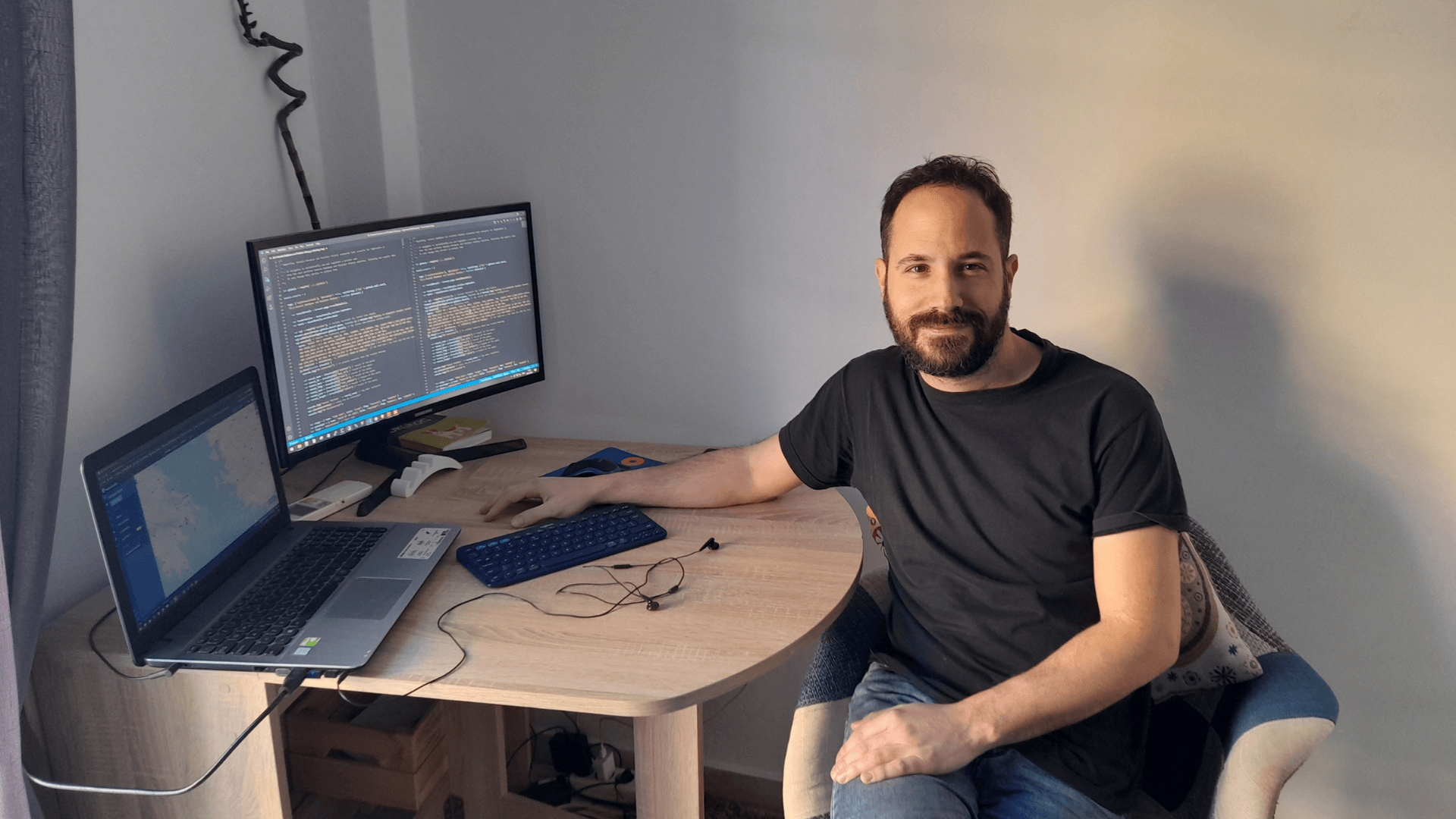A day in the life of a Quality Assurance (QA) Automation Engineer isn’t literally all just sitting in front of a computer and catching bugs with your test scripts. It is way more than that, including, among others, a lot of coding, and involving flexibility, collaboration, and teamwork.
“Being a Quality Assurance Automation Engineer is like having a hybrid role and bridging the gap between coding and QA,” says Chris Kouvaras, one of the key team members of the Engineering team at MarineTraffic.
“Simply put, in this role, our main focus is on creating code that tests other people’s front-end and back-end code,” he explains.
When I asked Chris to describe a typical day at work, he told me that no weekday is the same.
Each day starts with coffee and planning. “The first thing I do is a catch-up call with my fellow teammates in automation to set priorities, discuss the testing process, and plan the deliverables for the day or for the sprint. That is our Monday’s routine, and it is a critical part as it helps us ensure a smooth software delivery experience.”
“Next up, we either write new code, maintain or refactor the existing one to increase both our testing coverage and code quality.”
So, Mondays are for planning and along with the QA Analysts, the team makes sure every task includes all the specifications needed for the test, classifying them by priorities. While I am thinking that this day must have been pretty busy already, Chris told me that the busiest day of the week is Tuesday.
“Tuesday is the day we shine,” adds Chris.
“After having coded and tested all the tasks for all the new features or bug fixes that need to be automated and included in the Pre Production environment, we start the deployment of the new code on Tuesday.”
During this stage, there is a lot of collaboration with the back-end and front-end engineers that have worked on the sprint, to build and deploy the release on Pre Production servers.
“The maximum number of test cases that are being executed after every deployment is almost over a thousand and the assertions are millions. These numbers of course increase as new features for the MarineTraffic platform are built and thus new test scripts are written.”
After all the tests have finished running, Chris and his team prepare a report file where they simply investigate in detail if the tests pass flawlessly, if they failed due to a bug, or if they are broken and need updating. Adding to that is fixing any new bugs, redeploying the fixes and rerunning tests.
During our discussion with Chris, I understand that there are a few software automation engineering tasks that are a given, however, there is also a lot of room for creativity and growth.
They have set up recurring development and retrospective meetings to discuss progress, blockers and any other issues related to the sprint they are executing, and define the ways of improving the working process. From workflows, bug reporting, new testing methods, to improvements on the framework, extensions of the IDE, coding ideas, new language features, and so many more.
MarineTraffic QA engineers are also a key part of the onboarding process of the new joiners at the company. They are responsible for the QA day, a recurring online workshop where new hires learn about the capabilities and get familiarised with the platform while actually reporting bugs in the most fun way possible.
This day is an initiative of the Quality Assurance team where the participants will look at the MarineTraffic features with a fresh eye, being able to discover potential bugs/issues. It gives us the opportunity to constantly check how user-friendly the products are, by recording the steps the users make in order to reach the goal of the given use-cases.
“The extra value brought to the participants is that they will explore areas of the MarineTraffic platform that they do not necessarily know, and they will experience a bit of the testing mindset.”
P.s. In pre-COVID times we used to have free cookies and coffee too!
For Chris, every day at MarineTraffic is an opportunity to learn something new.
“I am not the same engineer as I once was when I first joined MarineTraffic. I have started refactoring the old code introducing new coding techniques and tricks to make it easier to read for the next generation of Engineers, faster to run in order to balance more tests against running times, and easier to debug.”
At MarineTraffic, we are always looking for talented people to join our team, and help us make an impact. Learn more about our latest job openings here: https://apply.workable.com/marinetraffic/
